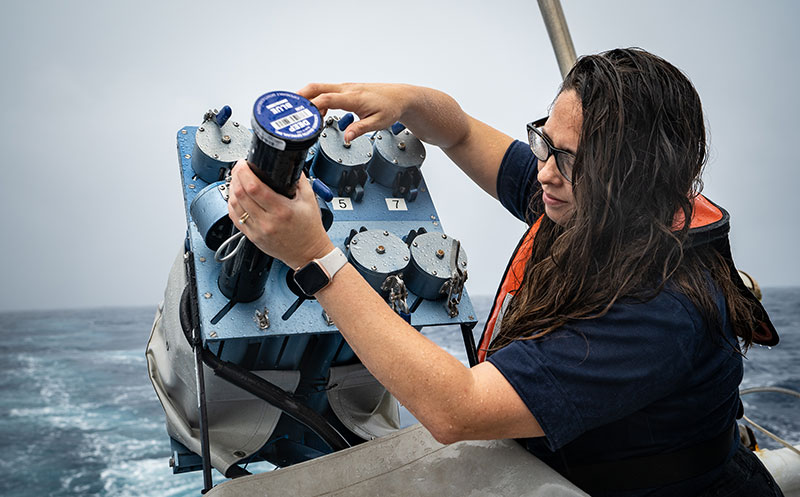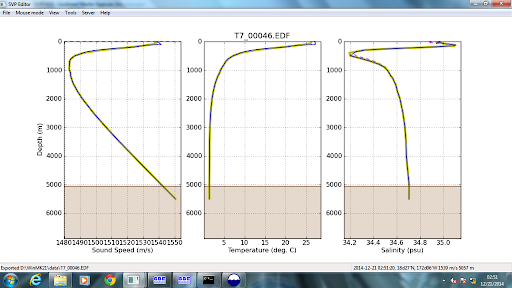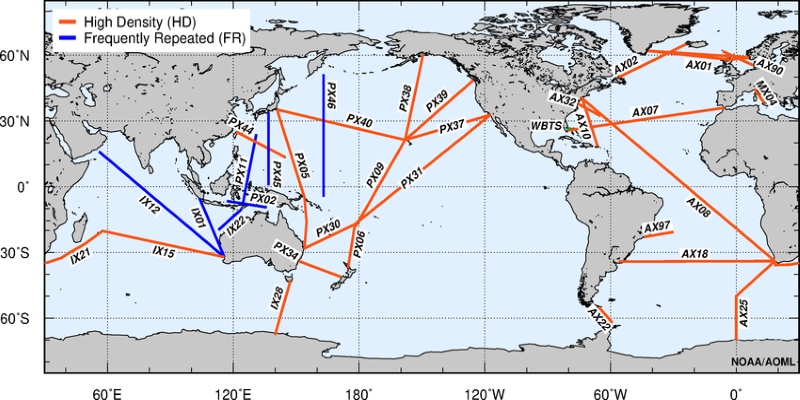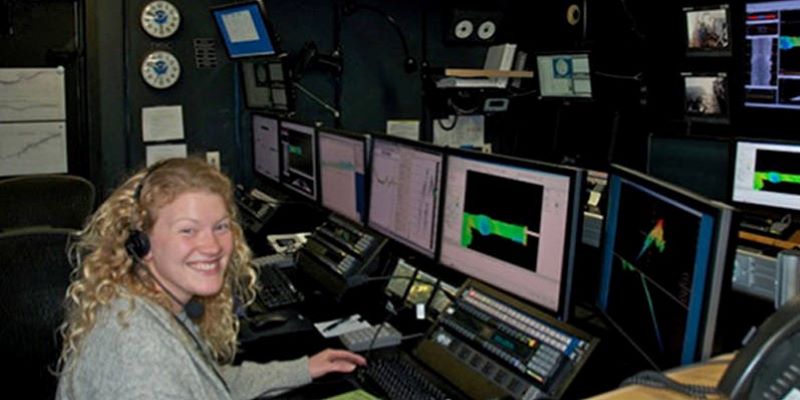XBTs (Expendable Bathythermographs)

Mapping lead Shannon Hoy replenishes the expendable bathythermographs (XBTs) in the XBT autolauncher. These autolaunchers, designed by the NOAA Atlantic Oceanographic and Meteorological Laboratory, allow for XBTs to be automatically and remotely deployed by scientists either on a ship or on shore. Image courtesy of NOAA Ocean Exploration, 2019 Southeastern U.S. Deep-sea Exploration. Download largest version (jpg, 4.8 MB).
Expendable bathythermographs, or XBTs, are small torpedo-shaped probes used to collect ocean temperature data. After being deployed from a vessel with a launcher, the XBT probe falls through the water column at a predictable rate of descent, measuring the ocean’s temperature and transmitting the data back to the surface.
XBTs have an extended history of helping scientists understand the temperature profile of our ocean. XBTs were first used in the 1960s in the North Atlantic Ocean, and by the late 60s were being systematically deployed to collect information about the upper-ocean thermal record. By 1998, XBTs were frequently being deployed along fixed routes, called “transects.” There are numerous transects that have been collected throughout the ocean, which together form the “XBT Network.” This network allows organizations across the globe to monitor our ocean’s evolving temperatures in a routine and collaborative manner.
How Does It Work?
A benefit of XBT technology is that it is structurally simple and quick/easy to deploy, which maximizes the time scientists spend analyzing the water column. The XBT has three main parts: the expendable probe (which travels through the water), the data processing/recording system (which records the water temperature), and a launcher (which can be either manual or automatic). The XBT is connected to a vessel through thin copper wires, which unspool from the ship as the weight of the XBT sinks the probe through the water column. The XBT returns real-time temperature readings to the ship’s computers through these copper wires.
XBTs also indirectly calculate depth; because the probe falls through the water at a predictable rate, the depth of the probe can be determined based on the time it was launched. Computers take this information and plot the temperature as a function of depth, which generates a temperature profile of the water. Once the XBT reaches its maximum pre-determined depth, the temperature profile is complete.

These plots depict the speed of sound (left), temperature (middle), and salinity (right) versus depth. On the middle chart in the upper-right corner, the small vertical blue segment shows the steady temperature of the mixed layer, which was recorded by an expendable bathythermograph (XBT). When the temperature begins to decline and the blue line veers left-wards, scientists know that they have located a thermocline. Image courtesy of NOAA Ocean Exploration, 2017 Laulima O Ka Moana. Download largest version (jpg, 58 KB).
What Happens Next?
While these XBT-generated temperature profiles reveal a lot about ocean temperature, the profiles also play an important role in multibeam mapping operations. In order for multibeam sonar to generate accurate depth measurements, the system needs to know the speed of multibeam sound waves through the water column.

Neah Baechler, a mapping watchstander during a 2017 deep-monument Hawai’ian expedition, prepares to put away the expendable bathythermograph (XBT) probe (left), and the XBT launcher (right) after its deployment. During the expedition, the XBT was manually launched every 2-6 hours in a process called an “XBT cast” to measure water column temperature data down to 760 meters (2,493 feet). This information was used to assist with multibeam mapping. Image courtesy of the Woods Hole Oceanographic Institute: Jurassic Magnetism expedition. Download largest version (jpg, 7.3 MB).
Sound speed changes with the fluctuation of water column density, and density is dependent on three factors--temperature, salinity, and pressure. Temperature is the largest contributor, meaning it is important for scientists to have an accurate recording of water column temperatures to accurately estimate sound speed. By using XBT-collected temperature information, along with surface salinity data collected by a thermosalinograph (TSG) or historical data from the World Ocean Atlas, scientists can calculate accurate sound speed profile measurements to estimate the depth of acoustic scatterers, such as the seafloor and objects in the water column.
Why Is It Important?
XBTs account for the largest fraction of ocean temperature profile observations since the 1970s. Not only does this assist with mapping expeditions, but it also helps build a record of data of seasonal fluctuations of ocean temperatures. XBTs are useful for determining how oceanic temperatures change through time, which makes them important tools in helping measure the health, stability, and state of our waters.



